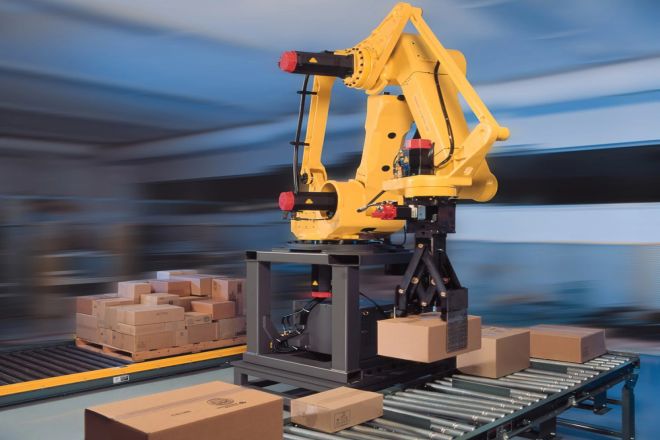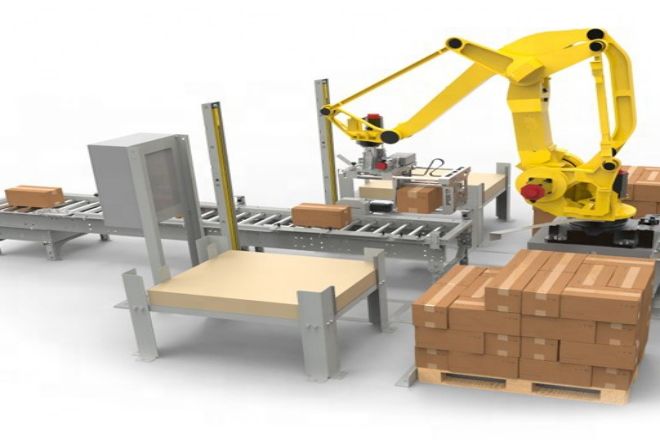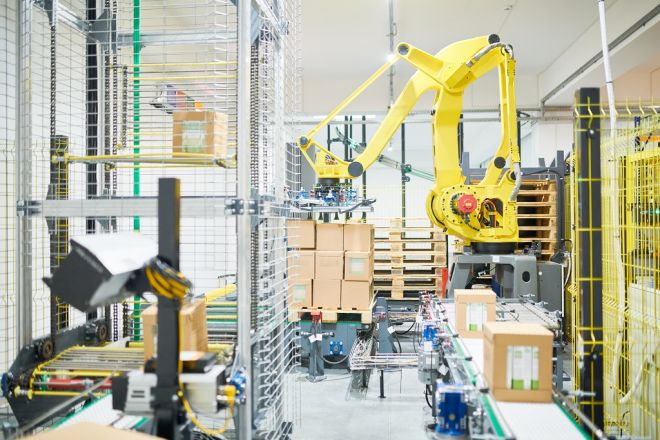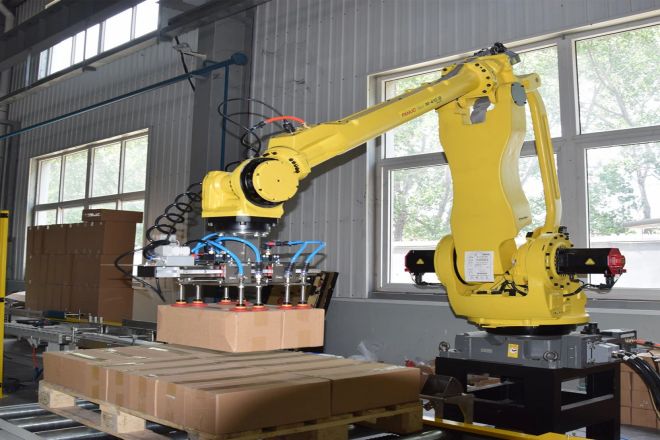Introduction

As the last link of the carton packaging machine production line, the stacking device is also a key part of the production line. The generalization of the stacking device has improved the production efficiency of the carton packaging machine to another level.
So, how do we choose a stacking device? Is there any way? This article will give you a detailed introduction to the stacking device; let us continue to look down.
1. What is a stacking device?
The stacking device is an automated device; its function is to automatically stack the packaged products according to the predetermined quantity and method and then transport or store them later. It can accurately stack cartons together according to preset programs and algorithms to facilitate subsequent packaging and transportation, and in the process, it can effectively improve production efficiency, reduce tedious manual operations, and reduce labor costs.
2. Advantages and disadvantages of stacking devices compared with manual stacking

- Advantage:
1). Compared with traditional manual stacking, the stacking device has obvious advantages.
2). The stacking device can realize automatic operation, which greatly improves work efficiency. In contrast, manual stacking takes a lot of time and human resources.
3). The stacking device can ensure the accuracy and consistency of stacking, avoiding errors and instability that may be caused by human factors.
- Disadvantages:
The disadvantage of stacking devices is that they require relatively high investment costs and technical support, as well as requirements for equipment maintenance and maintenance.
3. What links does the stacking device consist of?
The stacking device usually consists of the following links: conveyor belt system, stacking mechanism, sensor, and control system. The conveyor belt system is used to transport the packed cartons to the position of the stacking mechanism. The stacking mechanism is responsible for stacking the cartons into stacks. The sensor is used to detect the position and status of the cartons. The control system operates and monitors the entire stacking device.
4. Work steps

- Cartons enter the conveyor belt system:
The packed cartons are placed on the conveyor belt from the packaging area, and the conveyor belt pushes them sequentially to the position of the stacking mechanism.
- Stacking mechanism stacks cartons:
The stacking mechanism accurately stacks cartons according to preset procedures and algorithms. Usually, the stacking mechanism uses devices such as suction cups, mechanical arms, or push plates to stack cartons together in a prescribed stacking form.
- Sensors detect carton status:
Sensors monitor the position and status of cartons to ensure the accuracy and stability of the stacking process.
- Control system operation and monitoring:
The control system operates and monitors the entire stacking device to ensure the normal operation of the equipment and to deal with abnormal situations in time.
5. Working principle
The working principle of the stacking unit is based on advanced mechanical control and automation technology. The position and status of cartons are monitored in real-time by sensors, and the control system guides the stacking mechanism to operate according to preset procedures and algorithms. The stacking mechanism uses devices such as suction cups, mechanical arms, or push plates to accurately stack the cartons together to form a neat and orderly stacking form.
The stacking needle board in the stacking device will raise the packed cartons one by one and cross-stack them on the stacking needle board. Different productions have different stacking methods, which need to be adjusted according to different production requirements; after stacking, the needle plate is put down, and the product is moved to the designated position.
6. Tips for choosing a stacking unit

Select the appropriate stacking device model and specification according to the demand, considering factors such as the production line capacity and the size of the carton.
The applicability and stability of the device, as well as its technical indicators and performance in actual production, should be considered.
It is necessary to consider the variety, quantity, and scale of production, as well as the corresponding stacking method and capacity.
It is also necessary to consider the maintenance and maintenance of the device to ensure its long-term stable operation and production efficiency.
Understand the reputation and after-sales service of suppliers, choose reliable suppliers and brands, ensure that equipment meets relevant safety standards and regulations, and ensure the safety of operators.
Conclusion
The stacking unit offers many advantages through automation and efficiency; compared with traditional manual stacking, the stacking device can realize automatic operation, improve work efficiency, and ensure the accuracy and consistency of stacking. Although stacking units require high investment costs and technical support, the benefits they bring make them indispensable in modern logistics and packaging industries.
If you still want to know more about carton packaging machines, please leave a message below!
